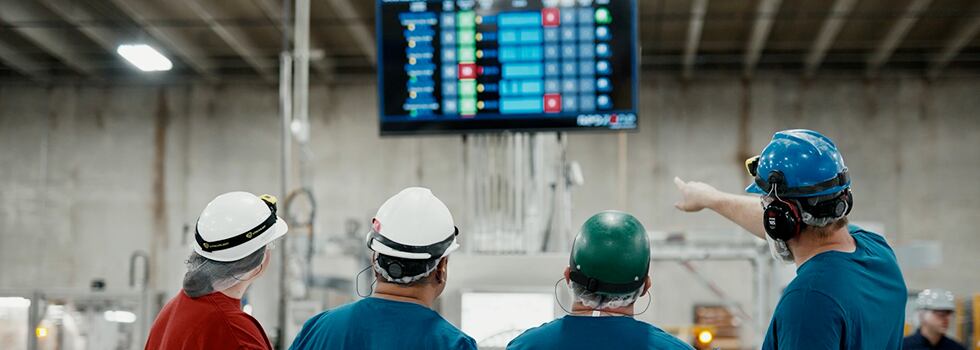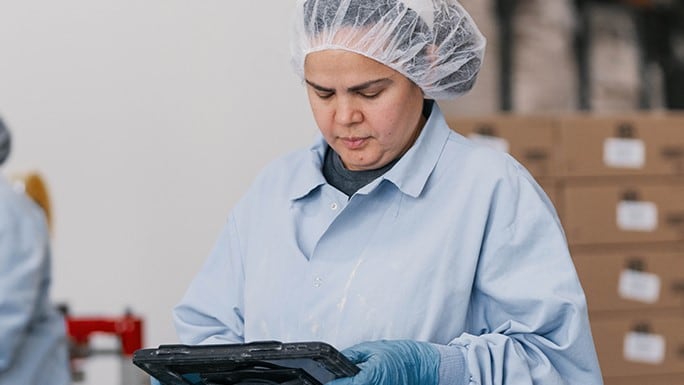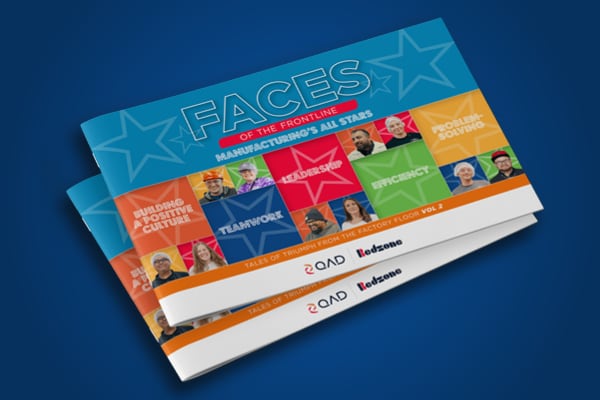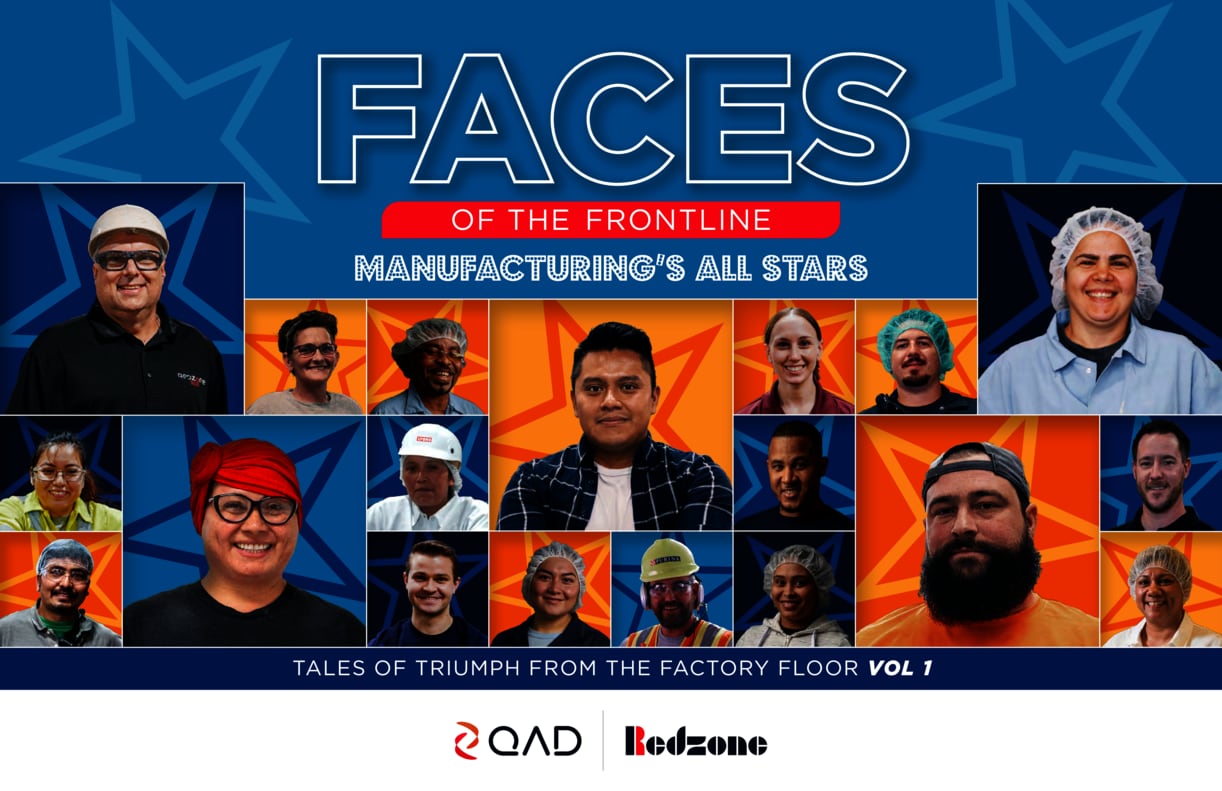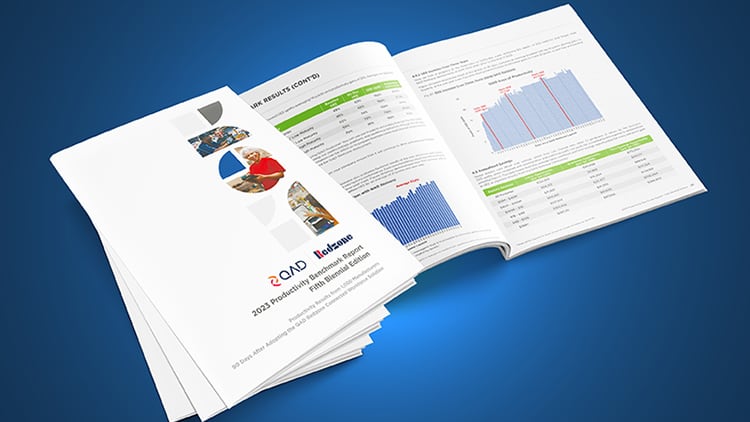Manufacturing is critical to global economies. In 2021, the industry contributed $2.3 trillion to US economy, amounting to 12% of total US GDP.1
Manufacturing is showing a remarkable resilience, especially impressive when compared to turmoil in the financial and technology sectors. It has a lot to offer, including job security, competitive compensation and professional growth. Yet the industry is experiencing a demographic shift with its frontline workers, with Baby Boomer employees – who make up more than a quarter of the workforce – reaching retirement, leaving gaps that are hard to fill.2
For manufacturing firms and hiring managers, this is a challenge in itself. On a global level, the impact of the labor crisis is significant, with labor shortages of 500,000 workers forecast to cost the industry $1 trillion by 2030.3
Building and retaining a workforce that is engaged, connected and empowered has long been a challenge in the manufacturing industry, prompting the term ‘humanufacturing’ to denote the essential, yet often times overlooked, human element.
Attracting a new generation of Millennials and Gen Zs to take the reins can be tricky. For many, the perception of manufacturing is not an attractive one, its jobs and opportunities perceived as antiquated as their parents. Indeed, less than 20% of parents of children under 18 would encourage their children to work in the sector, associating it with low pay.4
In an attempt to tackle the issue, plants (who have to compete with logistics and service industries) have already begun increasing salaries and introducing 90-day bonuses to compete for workers. But for those who do enter the industry, staying simply to collect a lump sum has become the new normal and younger workers are likely to job-hop: 25% of Gen Z workers plan to leave their current role in the next six months.5
So how does the industry close the generation gap and inspire new workers to sign up? How do manufacturing firms not only attract but engage and retain a new workforce?
A digital transformation that engages and connects
The good news for manufacturing firms is that 75% of Gen Z workers, whilst prone to job-hopping, are willing to switch career paths.5 According to QAD Redzone, whose software is designed to help frontline workers feel engaged and connected, resetting the work culture at the human level is essential to a company’s productivity and growth.
Manufacturing companies that manage to attract and, crucially, retain this new demographic stand to reap the rewards of a loyal workforce which is drawn to longer-term benefits, such as career advancement and training opportunities and are therefore less likely to leave.
QAD Redzone’s software helps to attract and engage younger generation, giving a digital identity and voice to the frontline employee, while management can focus on cultivating talent from the inside. And with 74% of unengaged workers actively seeking new jobs, using collaborative tools from the get-go to prevent employees from tuning out and leaving is essential.6
Implementing modern, cloud-based training and software can convince new workers that there is a future for them in the tech-forward manufacturing sector. Showing prospective employees what success can look like within the context of their own generational standards, with technology they can relate to, is an effective way to engage, yet one which is rarely found on the factory floor.
"The whole mindset has changed over the past 10 months – doing really innovative and creative things with the data… Great things from a quality perspective.” KIND, North Carolina
Essentially, QAD Redzone software eliminates the digital disparity between a factory floor and an office. Via an app, production line employees can communicate and engage with their team and everyone else in the plant, in their language, both on site and remotely. Motivational activities and targets, rewarded via annual community award schemes, together with productivity tools, coaching and integration, have been proven to enhance engagement and plant throughput, and reduce staff turnover. Tapping into the laws of human nature by focusing on the following five areas of engagement the software is designed to:
- Connect teams and individuals
- Promote ownership of performance
- Enable autonomous problem solving
- Enable cross team collaboration
- Help frontline workers feeling competent and recognized
A renewable talent pipeline
To date, QAD Redzone is helping more than 1,000 plants worldwide achieve significant productivity gains in 90 days. Its annual Community Awards 2022 showcased the stories behind multiple workforces who were driven to succeed. There was Vytalogy Wellness, a nutraceutical manufacturer in the Los Angeles area, and winner of QAD Redzone Plant of the Year Award 2022, who deployed four of QAD Redzone’s modules in under 18 months and recorded a 63% improvement in productivity. In addition, the company has moved from working six to five days a week with no overtime, cut unplanned downtime by 25% and brought the safety rate to zero incidents.
“There’s a smile on everyone’s face.” Vytalogy Wellness Company
In Minneapolis Minnesota, Productivity Award winner Bizzy Coffee increased output by 52% within 90 days while reducing days of operation from seven to five. Employees here were certainly motivated beyond the 90-day period – five frontline workers have recently celebrated their one-year anniversary.
Meanwhile, food manufacturer Samworth Brothers, Productivity Award winner, reported a 70% OEE (Overall Equipment Effectiveness) baseline increase, which led to a 20% uplift and huge cost savings within 90 days of using the software. And California Natural Products, Engagement Team of the Year winner, described the impact of the QAD Redzone Learning module as “explosive”, crediting it with harnessing a true sense of ownership within the team. They achieved a 7% reduction in plant turnover together with a 14% improvement in OEE.
“It started a trend in Operations but spread through the plant that became a positive shift in the culture.” California Natural Products
Noosa Yoghurt, Reliability Team of the Year winner, saw a 15% uplift in production thanks to the Reliability programme. As a result, they have created an environment where team members are motivated to learn and do more to reduce workload and build more collaborate and effective teams. Several team members have upskilled into roles in maintenance and management.
People-first solutions
QAD Redzone, whose tagline is ‘Empower the frontline, grow the bottomline’, encompasses the company’s commitment to help manufacturers empower their workforce. Enabling frontline teams to feel like valued members of their work community means they will contribute to their full potential to achieve productivity and throughput goals.
By valuing and celebrating the hundreds of thousands of frontline workers, stronger communities are being created both inside and outside their plants. After all, manufacturing is a state-of-the-art industry and a digital transformation seems like the smart way to evolve.
References
1. National Institute of Standards and Technology (NIST).
2. How Can Manufacturing Close the Generation Gap?
3. Egan, Matt. “American factories are desperate for workers. It’s a $1 trillion problem.” CNN. May 4, 2021.
4. EEF and Womble Bond Dickinson The Manufacturer Parents don’t want their children to work in manufacturing (Sept 2018)
5. Axios
6. Gallup

